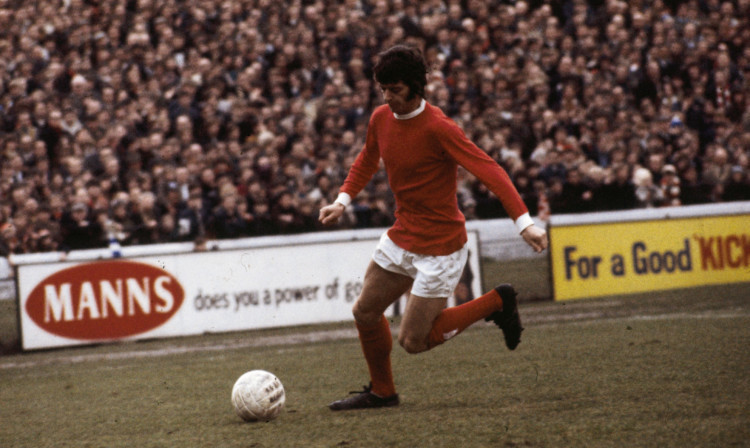
Man Utd legend Willie Morgan was probably the least surprised man in the land when the news broke that David Moyes had been sacked.
When he was installed as Manchester United manager last May, the former winger had gone on record that he didn’t think his fellow Scot was the right man for the job.
“I said he’d be sacked inside 18 months,” says Morgan. “He was never right for Old Trafford. He got the job for all the wrong reasons. The Glazers obviously assumed Sir Alex Ferguson would choose well, but in hindsight it hasn’t worked out like that.
“Moyes had never won a thing in his life. I’d watched his Everton teams play and felt his style of football was all wrong for United, who are still the biggest club in the world and need to be an attacking side.
“With Moyes, the emphasis has always been on not getting beaten. That’s never been the United way.
“The right man for the job was Jose Mourinho. He has a proven track record. He wanted it and he should have been given it.
“It’s too late now because he won’t leave Chelsea, but you have to ask yourself why he didn’t get it a year ago.”
Morgan is a man who speaks his mind. He spent seven years at Old Trafford and clearly still has its interests at heart. But unlike many former players, he doesn’t toe any official line.
In the past he fought and won a High Court libel case against Tommy Docherty after criticising The Doc on a TV football programme, and wrote a hard-hitting autobiography, On The Wing, that pulled few punches.
“Not hard-hitting,” he corrects. “I just told it like it was.”
And Morgan, now 69, is still forthright with his opinions.
“United are in an awful mess,” he says. “It’s a harder job now than when Moyes went in. It’s a jar full of worms.
“The players he’s bought have made things worse. The older players are reaching the end of their careers, and he’s brought in average players to replace them in Marouane Fellaini and Juan Mata. In fact, I don’t know what Fellaini has brought to the club. And he gave Nani a new five-year contract why? He was a player Sir Alex Ferguson wanted to get rid of.
“Ferguson also wanted to get rid of Wayne Rooney, but he was another player Moyes gave a big new deal to.
“Ryan Giggs obviously isn’t going to get the job permanently, but an appointment has to be made quickly. So many things have to happen in the summer and they’ve got to use the time before the start of next season to sort it out.”
Morgan, who was capped 21 times for Scotland and played at the 1974 World Cup Finals, is acutely aware of the comparisons being made between Moyes’s situation and that of Wilf McGuinness, the man hand-picked by Sir Matt Busby to carry his legacy forward when he retired in 1969.
By then, Morgan had been at the club for a year, a British transfer record and the last significant signing of the Busby era. But, in echoes of Robin van Persie’s situation under Ferguson, Willie had just a year under Busby before he passed the reins to McGuinness.
“It wasn’t really the same situation as Moyes found himself in with Sir Alex because Wilf had never managed a team before,” says Morgan. “None of us were expecting Matt to retire, but what he did in appointing Wilf was revolutionary as clubs didn’t appoint from within in those days.
“Later Liverpool did it with great success during their Boot Room years of Bill Shankly, Bob Paisley, Joe Fagan and Kenny Dalglish.
“The idea was right, but it was the wrong man with Wilf. He just wasn’t up to the job. Bobby Charlton or Paddy Crerand would have been the ideal choice to carry on the legacy.
“The players wanted Wilf to be successful because if he’s un-successful, then you are too.
“Once the appointment was made, Matt never interfered. He never came near training and let Wilf get on with it. But it soon became clear that the decisions he was making weren’t good ones. We were constantly asking ourselves why something was happening.”
In McGuinness’s first season, United finished eighth. Like with the Sir Alex-Moyes succession, there were familiar noises about a transitional season after Busby’s 24-year reign.
But when the following campaign reached Christmas and United were stuck in the bottom half with just five wins, the McGuinness experiment was ended.
Busby returned and United climbed back up to eighth. But Busby, by then 72, retired once more.
“He made nine changes in his first game back and we won,” says Morgan. “That’s shows how bad it had got. We all wanted Matt to stay on but, of course, he didn’t.
“I’m sure the players at United this season would have reacted in pretty much the same way we did. Not one player would have said that they didn’t want David Moyes when he was appointed.
“The senior players would have been onside and they’ll have said: ‘Great, let’s hope we can be just as successful as we were under Sir Alex.’
“It’s not an overnight thing. But once the players realise a manager is not up to the job, you start getting dissent.”
David Moyes has now found that out to his cost.

Enjoy the convenience of having The Sunday Post delivered as a digital ePaper straight to your smartphone, tablet or computer.
Subscribe for only £5.49 a month and enjoy all the benefits of the printed paper as a digital replica.
Subscribe